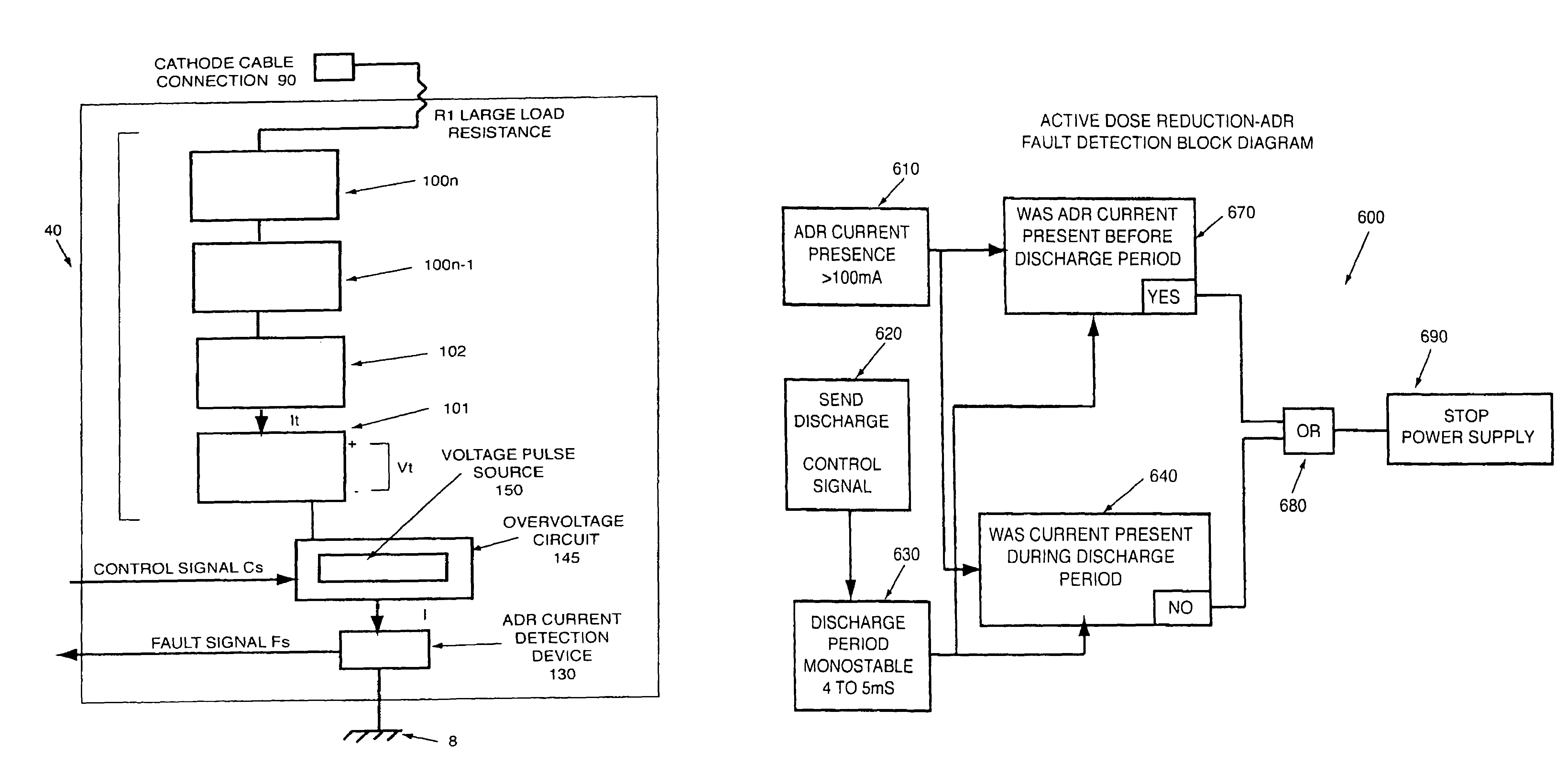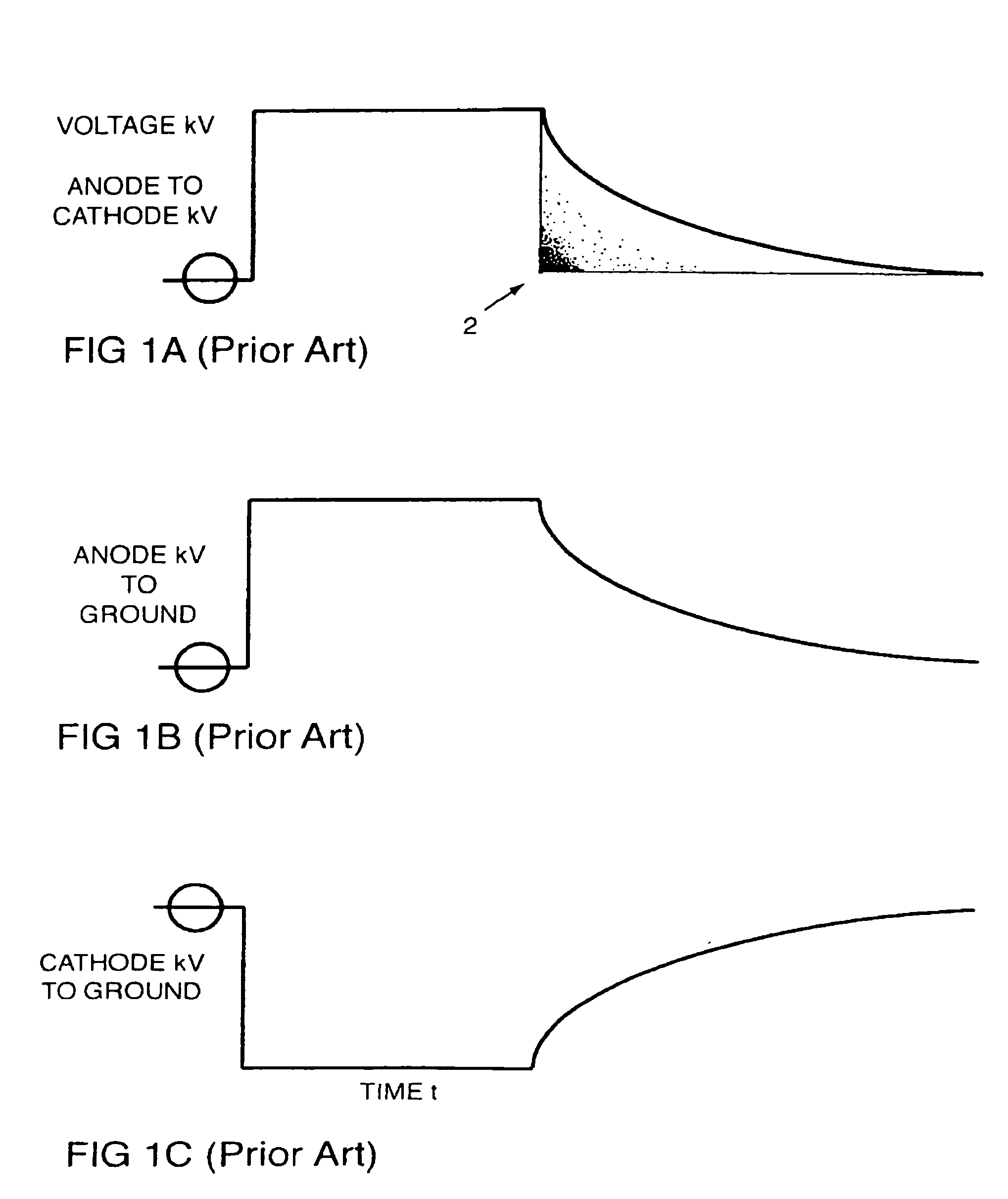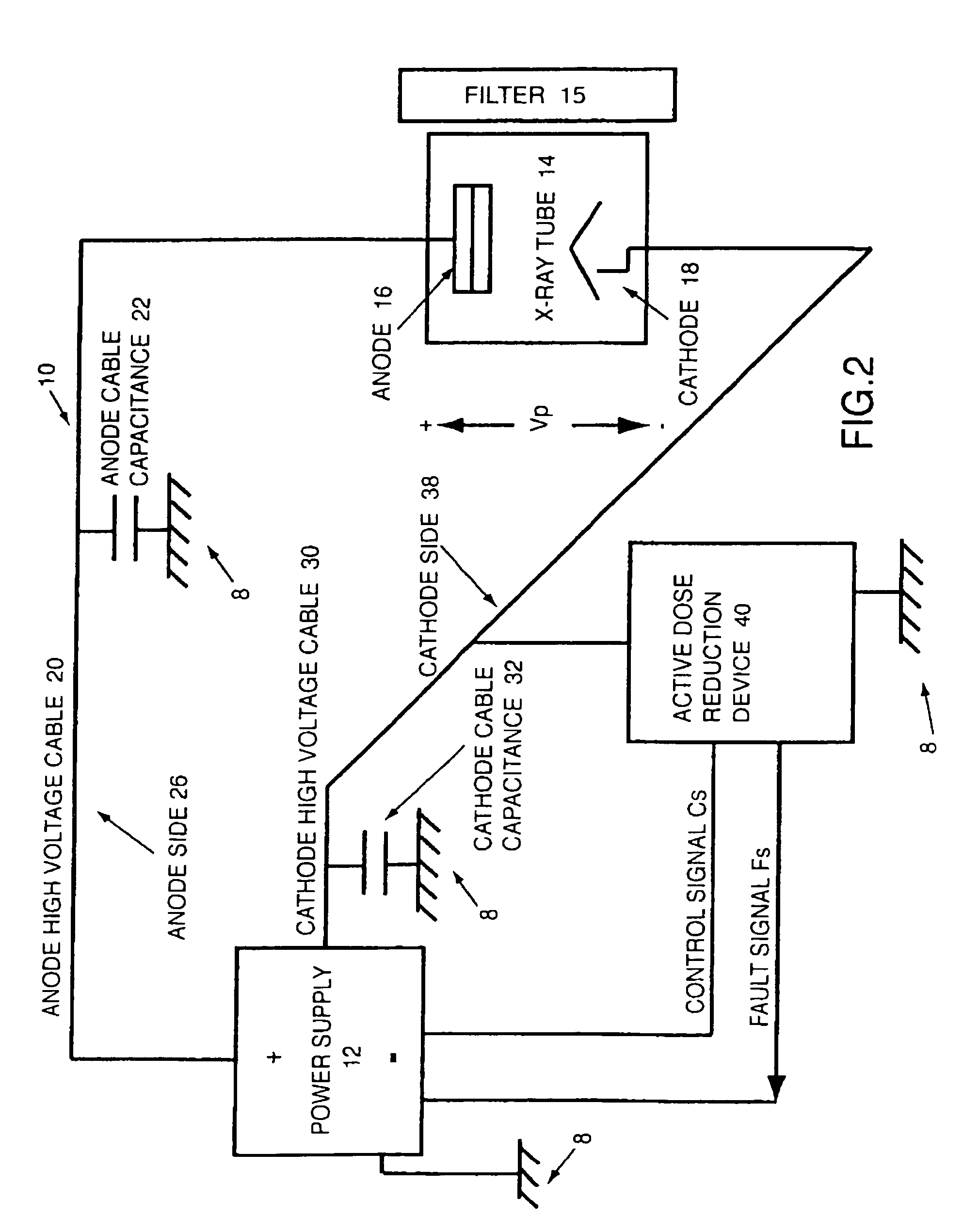Active dose reduction device and method
a technology of active dose and reduction device, which is applied in the field of active dose reduction device and method, can solve the problems of large amount of x-ray radiation, detrimental “tail” of x-rays, and detrimental imaging value, and achieve the effects of reducing the overall cost and volume of the device, simplifying the control circuitry, and increasing control reliability
- Summary
- Abstract
- Description
- Claims
- Application Information
AI Technical Summary
Benefits of technology
Problems solved by technology
Method used
Image
Examples
Embodiment Construction
[0044]Preferred embodiments of the invention and its advantages can be understood by referring to the present drawings. In the present drawings, like numerals are used for like and corresponding parts of the accompanying drawings.
[0045]FIG. 2 illustrates an imaging system, shown generally by reference numeral 10, comprising an active dose reduction device, shown generally by reference numeral 40, according to one embodiment of the present invention. As illustrated in FIG. 2, the imaging system 10 comprises a power supply 12, such as a generator, for supplying power to an x-ray tube, as shown generally by reference numeral 14, at a preselected voltage Vp. The power supply 12 supplies the power to the x-ray tube 14 through an anode high voltage cable 20, connected to anode 16 of the x-ray tube 14, and a cathode high voltage cable 30, connected to the cathode 18 of the x-ray tube 14. Accordingly, the anode high voltage cable 20 and the cathode high voltage cable 30 represent a cable se...
PUM
 Login to View More
Login to View More Abstract
Description
Claims
Application Information
 Login to View More
Login to View More - R&D
- Intellectual Property
- Life Sciences
- Materials
- Tech Scout
- Unparalleled Data Quality
- Higher Quality Content
- 60% Fewer Hallucinations
Browse by: Latest US Patents, China's latest patents, Technical Efficacy Thesaurus, Application Domain, Technology Topic, Popular Technical Reports.
© 2025 PatSnap. All rights reserved.Legal|Privacy policy|Modern Slavery Act Transparency Statement|Sitemap|About US| Contact US: help@patsnap.com



